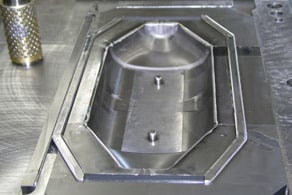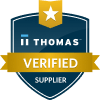Developing effective transfer tooling procedures lets small and medium-sized manufacturers minimize their tool development costs and hedge against unpredictable component suppliers. Tooling is an expensive process, but it typically involves only a one-time cost, so anything that can make the tooling process more affordable will greatly impact your overall expense portfolio. As the trade war between the U.S. and China continues to heat up, it’s now more important than ever to consider transferring tooling back to American manufacturers to mitigate increased costs and other supply chain disruptions as a result of tariffs.
External suppliers perform a number of time-intensive processes during tooling development so that you don’t have to. Third-party tooling services include:
- Machining
- Heat treating
- Routing
- Barcoding
- Turning assembly
- Pressing
- Debugging
- CMM final inspection
When you let other manufacturers perform these tasks, you can dedicate more time and resources to applications more central to your company’s mission.
In this post, we describe eight transfer tooling strategies that will enable you to get the most from outsourcing your tooling production.
Eight Steps to Successfully Transfer Your Tooling

1.) Make Sure Everything’s Covered in Your Contract
All parties subject to the transfer tooling agreement must sign nondisclosure agreements to ensure that any new innovations remain between those concerned. NDAs must cover part prints, quality assurance policies, and production requirements. Additionally, governmental and third-party regulators often require legally sound contractual agreements to be signed before work can begin.
2.) Create a Strong Partnership that Emphasizes Communication
A partnership based on trust and open communication between the businesses will ensure that parts arrive on time and that nothing is lost in translation. Both companies must be willing to take the appropriate steps to ensure that communication channels remain open throughout the process.
3) Perform On-Site Assessments Early and Often
It’s important to have a solid understanding of your transfer partner’s capabilities before entering an agreement. Additionally, once production has begun, frequent and respectful on-site assessments will ensure that you have as much information as possible on the status of your tooling.
4) Agree on a Clear Production Schedule
Create a detailed transfer schedule using data from on-site assessments. The schedule must include transfer dates for all parts and tools while allowing enough time to produce the tools to your standards.
5) Build Enough Safety Stock to Allow Efficient Tooling Transfer
The supplier must provide enough safety stock that you can use during the validation of production equipment and processes at the new facility. Typically, business partners set up a six-week timeframe within the transfer schedule, although it’s important to allow for the possibility of additional shifts and/or weekend work to make sure everything’s running on time.
6) Ensure You Buy the Correct Consigned Equipment
The third party may need to buy nonconsigned equipment to successfully build your transfer parts. Consignment equipment typically includes tooling and spares, fixtures, inspection gauges, and all other product-specific equipment.
7) Validate All Transfer Tools Before Ending Your Contract
When the third-party’s transfer tools leave production, you should ensure that they’re all compatible with your existing facility. Many companies validate transfer tooling by analyzing their new parts’ similarity to existing parts and performing golden sample processes.
8) Design Production Molding For Use in the Next Transfer
Once the tools have been validated and incorporated into your production processes, make sure you or your contractor save the production mold to simplify the transfer tooling process next time you go through it.
Applications for Transfer Tooling
Just about any industrial manufacturer needs to develop effective transfer tooling procedures. A wide range of manufacturers regularly contract third parties to ensure that their next generation of tools is of as high quality as possible. Industries that implement comprehensive transfer tooling procedures include:
- Sheet metal stampers
- OEMs
- Appliance manufacturers
- Automotive and aerospace OEMs
- Furniture assemblers
- Machine tool shops
- Medical device manufacturers
Transfer tooling can work with a wide range of metal products, such as:
- Aluminum
- Cold-rolled steel
- Spring steel
- Stainless steel
- HSLA
Manor Tool: A Trusted Source for Transfer Tooling
Manor Tool & Manufacturing is an ISO 9001:2015–certified company that can help you with all your transfer tooling requirements. If you’re looking for more best practices on how to implement the most effective transfer tooling procedures, download our free eBook, “Everything You Need to Know About Transferring Tooling.”
If you’re looking to embark on a transfer tooling procedure of your own, feel free to contact us at your earliest convenience to request a free quote.




